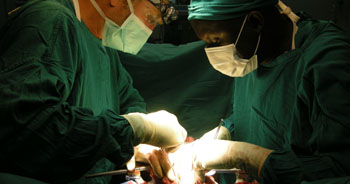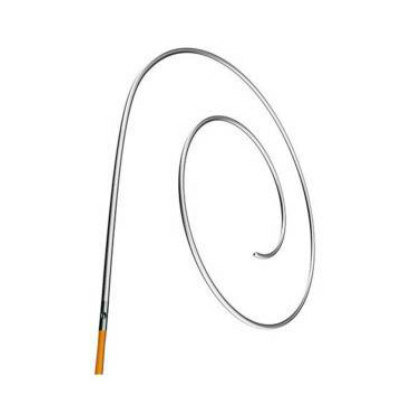WHO Issues New Guidelines to Reduce Surgical Infections
|
By Daniel Beris Posted on 01 Dec 2016 |

Image
The World Health Organization (WHO; Geneva, Switzerland) has released new global guidelines covering surgical site infection (SSI), with a view to reduce costs and infection-related patient complications.
The WHO "Global Guidelines for the Prevention of Surgical Site Infection" includes a list of 29 concrete recommendations distilled by 20 of the world’s leading experts from 26 reviews of the latest evidence. Included are 13 recommendations for the period before surgery, and 16 for preventing infections during and after surgery. They range from simple precautions, such as ensuring that patients bath or shower (but not shave) before surgery, to instructions for surgical team hand hygiene compliance, what disinfectants to use before incision, and which sutures to use.
The guidelines complement the WHO “Surgical Safety Checklist”, which gives a broad range of safety measures. Importantly, the guidelines recommend that antibiotics be used to prevent infections before and during surgery only, and not after, a crucial measure in stopping the spread of antibiotic resistance, which leads to longer hospital stays, higher medical costs, and increased mortality. The recommendations were published on November 3, 2016, in The Lancet Infectious Diseases.
“No one should get sick while seeking or receiving care,” said Marie-Paule Kieny, MD, assistant director-general for health systems and innovation at the WHO. “Preventing surgical infections has never been more important, but it is complex and requires a range of preventive measures. These guidelines are an invaluable tool for protecting patients.”
“Sooner or later many of us will need surgery, but none of us wants to pick up an infection on the operating table,” said Ed Kelley, MD, director of the WHO department of service delivery and safety. “By applying these new guidelines surgical teams can reduce harm, improve quality of life, and do their bit to stop the spread of antibiotic resistance. We also recommend that patients preparing for surgery ask their surgeon whether they are following WHO’s advice.”
SSI’s are an important contributor, and may even be the most frequent healthcare-associated infection (HAI) after asymptomatic bacteriuria, representing a high burden on patients and hospitals in terms of morbidity, mortality, prolonged length of hospital stay, and additional costs. Researchers have been searching for decades for the optimal bowel preparation, but failed to address biological factors. Today, however, genome sequencing and microbiome studies have open up new areas for study that might give biological insight into what works best and for which patients.
Related Links:
World Health Organization
The WHO "Global Guidelines for the Prevention of Surgical Site Infection" includes a list of 29 concrete recommendations distilled by 20 of the world’s leading experts from 26 reviews of the latest evidence. Included are 13 recommendations for the period before surgery, and 16 for preventing infections during and after surgery. They range from simple precautions, such as ensuring that patients bath or shower (but not shave) before surgery, to instructions for surgical team hand hygiene compliance, what disinfectants to use before incision, and which sutures to use.
The guidelines complement the WHO “Surgical Safety Checklist”, which gives a broad range of safety measures. Importantly, the guidelines recommend that antibiotics be used to prevent infections before and during surgery only, and not after, a crucial measure in stopping the spread of antibiotic resistance, which leads to longer hospital stays, higher medical costs, and increased mortality. The recommendations were published on November 3, 2016, in The Lancet Infectious Diseases.
“No one should get sick while seeking or receiving care,” said Marie-Paule Kieny, MD, assistant director-general for health systems and innovation at the WHO. “Preventing surgical infections has never been more important, but it is complex and requires a range of preventive measures. These guidelines are an invaluable tool for protecting patients.”
“Sooner or later many of us will need surgery, but none of us wants to pick up an infection on the operating table,” said Ed Kelley, MD, director of the WHO department of service delivery and safety. “By applying these new guidelines surgical teams can reduce harm, improve quality of life, and do their bit to stop the spread of antibiotic resistance. We also recommend that patients preparing for surgery ask their surgeon whether they are following WHO’s advice.”
SSI’s are an important contributor, and may even be the most frequent healthcare-associated infection (HAI) after asymptomatic bacteriuria, representing a high burden on patients and hospitals in terms of morbidity, mortality, prolonged length of hospital stay, and additional costs. Researchers have been searching for decades for the optimal bowel preparation, but failed to address biological factors. Today, however, genome sequencing and microbiome studies have open up new areas for study that might give biological insight into what works best and for which patients.
Related Links:
World Health Organization
Latest Surgical Techniques News
- Catheter-Based Procedures Offer Less Invasive Option for Treatment of Valvular Disease
- Laparoscopic Surgery Improves Outcomes for Severe Newborn Liver Disease
- Novel Endoscopy Technique Provides Access to Deep Lung Tumors
- New Study Findings Could Halve Number of Stent Procedures
- Breakthrough Surgical Device Redefines Hip Arthroscopy
- Automated System Enables Real-Time "Molecular Pathology" During Cancer Surgery
- Groundbreaking Procedure Combines New Treatments for Liver Tumors
- Ablation Reduces Stroke Risk Associated with Atrial Fibrillation
- Optical Tracking Method Identifies Target Areas in Robot-Assisted Neurosurgery
- General Anesthesia Improves Post-Surgery Outcomes for Acute Stroke Patients
- Drug-Coated Balloons Can Replace Stents Even in Larger Coronary Arteries
- Magnetic Kidney Stone Retrieval Device Outperforms Ureteroscopic Laser Lithotripsy
- Absorbable Skull Device Could Replace Traditional Metal Implants Used After Brain Surgery
- Magic Silicone Liquid Powered Robots Perform MIS in Narrow Cavities
- 'Lab-on-a-Scalpel' Provides Real-Time Surgical Insights for POC Diagnostics in OR
- Biodegradable Brain Implant Prevents Glioblastoma Recurrence
Channels
Surgical Techniques
view channel
Catheter-Based Procedures Offer Less Invasive Option for Treatment of Valvular Disease
Valvular heart disease, caused by tight or leaky valves between heart chambers, affects up to 10% of older adults and leads to more than 120,000 deaths globally each year. Traditional open-heart surgery... Read moreLaparoscopic Surgery Improves Outcomes for Severe Newborn Liver Disease
Biliary atresia is a rare but life-threatening liver condition in newborns that blocks bile flow and leads to progressive liver damage if not treated early. Surgery is typically performed within the first... Read morePatient Care
view channel
Revolutionary Automatic IV-Line Flushing Device to Enhance Infusion Care
More than 80% of in-hospital patients receive intravenous (IV) therapy. Every dose of IV medicine delivered in a small volume (<250 mL) infusion bag should be followed by subsequent flushing to ensure... Read more
VR Training Tool Combats Contamination of Portable Medical Equipment
Healthcare-associated infections (HAIs) impact one in every 31 patients, cause nearly 100,000 deaths each year, and cost USD 28.4 billion in direct medical expenses. Notably, up to 75% of these infections... Read more
Portable Biosensor Platform to Reduce Hospital-Acquired Infections
Approximately 4 million patients in the European Union acquire healthcare-associated infections (HAIs) or nosocomial infections each year, with around 37,000 deaths directly resulting from these infections,... Read moreFirst-Of-Its-Kind Portable Germicidal Light Technology Disinfects High-Touch Clinical Surfaces in Seconds
Reducing healthcare-acquired infections (HAIs) remains a pressing issue within global healthcare systems. In the United States alone, 1.7 million patients contract HAIs annually, leading to approximately... Read moreHealth IT
view channel
EMR-Based Tool Predicts Graft Failure After Kidney Transplant
Kidney transplantation offers patients with end-stage kidney disease longer survival and better quality of life than dialysis, yet graft failure remains a major challenge. Although a successful transplant... Read more
Printable Molecule-Selective Nanoparticles Enable Mass Production of Wearable Biosensors
The future of medicine is likely to focus on the personalization of healthcare—understanding exactly what an individual requires and delivering the appropriate combination of nutrients, metabolites, and... Read moreBusiness
view channel
Philips and Masimo Partner to Advance Patient Monitoring Measurement Technologies
Royal Philips (Amsterdam, Netherlands) and Masimo (Irvine, California, USA) have renewed their multi-year strategic collaboration, combining Philips’ expertise in patient monitoring with Masimo’s noninvasive... Read more
B. Braun Acquires Digital Microsurgery Company True Digital Surgery
The high-end microsurgery market in neurosurgery, spine, and ENT is undergoing a significant transformation. Traditional analog microscopes are giving way to digital exoscopes, which provide improved visualization,... Read more
CMEF 2025 to Promote Holistic and High-Quality Development of Medical and Health Industry
The 92nd China International Medical Equipment Fair (CMEF 2025) Autumn Exhibition is scheduled to be held from September 26 to 29 at the China Import and Export Fair Complex (Canton Fair Complex) in Guangzhou.... Read more














